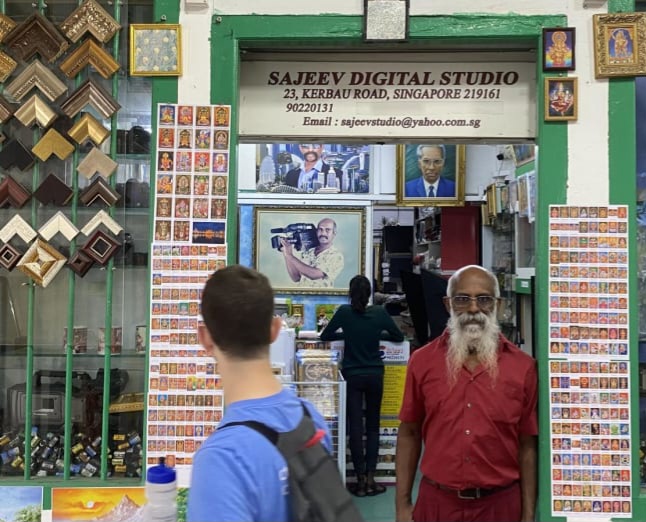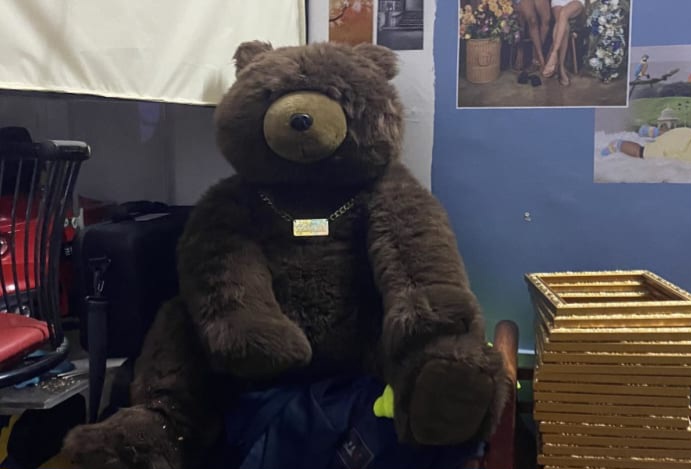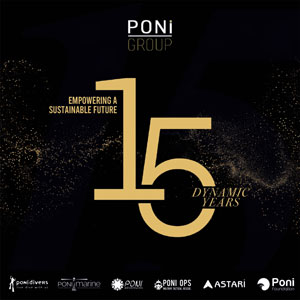SINGAPORE (CNA) – If you were a teenager in Singapore in the noughties, you might remember the chaos inside a Neoprint booth. My friends and I would choose our favourite photos and frantically decorate them with glittery words and kawaii stamps before time ran out, resulting in haphazardly designed final prints.
Fast forward to 2024, and Sajeev Digital Studio at 23 Kerbau Road in Little India evokes a similar joyful, unhinged energy. The studio, owned and run by Singaporean K Sajeev Lal and his wife Sheeja Shaj since 2002, is a unique relic among Singapore’s modern photo studios, which often favour a minimalist Scandinavian style.
At Sajeev Digital Studio, there’s no apparent guiding principle to the campy collage cut-outs or studio props. Sajeev transforms standard portraits into magical realist dioramas reminiscent of Tim Burton or Wes Anderson film sets, making the studio’s kitschy aesthetic truly stand out.
Perhaps the 58-year-old’s reply to how he derived his signature design – “do funny, funny thing I happy” – best encapsulates the sheer sincerity that underpins the whimsy. His English might be limited, but his imagination is boundless.
There doesn’t seem to be any guiding principle to the campy collage cut-outs or studio props, which Sajeev uses to transform standard portraits into magical realist dioramas straight out of a Tim Burton or Wes Anderson filmset.
Perhaps the 58-year-old’s reply to how he derived his signature design – “do funny, funny thing I happy” – best encapsulates the sheer sincerity that underpins the whimsy. His English might be limited, but his imagination is boundless.

Old school, quirky photo studio
In one photo, an Indian toddler wearing a sari poses between a pink and green genie against a reddish gradient backdrop dotted with stars, reminiscent of Microsoft PowerPoint 97.
In another series of photos displayed next to a wall fan on the first floor, a group of Caucasians dressed in Indian attire provided by the studio pose with a child-sized Suzuki electric motorbike, two large bouquets of fake flowers, and a vacuum cleaner. In the background, a man is seen smooching a stuffed bear with a gold chain. (Cultural appropriation? Doesn’t exist here.)
It’s hard to pick my favourite Sajeev invention, but a heavily edited photo behind the cashier comes close. An Indian man wearing sunglasses is framed by notable Singapore landmarks and buildings, including Marina Bay Sands, the Singapore Flyer, and the Merlion. Two planes and two cameras float on either side of his head.
The best part is the cut-out of the Singapore skyline, made up of photos taken by Sajeev himself, which is also reflected in the man’s sunglasses—a design choice that the Photoshop prodigy enthusiastically highlighted.
Another unique aspect of Sajeev’s studio is the handful of vibrant painted backdrops, reminiscent of utopian communist poster art, that customers can select before their shoot. Compared to the plain backdrops offered by most other studios, posing in front of a lake and trees or balustrade pillars adds a distinctive flair.
Some designs were bought from other photo studios that shut down, while others were given for free, Sajeev said. They’re not easy to replace once damaged.
“So many different background spoil already. So many tear. This one also got crack a lot. People step, step, walking, scratching,” he shared.
But I suspect these imperfections don’t matter to paying customers. They’re definitely inconsequential to me; in less than a minute of setting foot into the shophouse studio, I went from “what is going on?” to “I kind of need this in my life”.
Judging by the “wallpaper” from his stairwell to studio, so do many migrant workers.

Getting customers comfortable
Sajeev’s studio first gained semi-mainstream attention in 2015, when his work with young male migrant workers was highlighted in a photo exhibition at visual arts space Objectifs. For SGD20 per soft copy portrait, including touch-up services, Sajeev helps these workers find brides back in their home country.
There is good news for the camera shy or those who take some time to warm up: Sajeev is not a stickler for time, at least not when customers are scant these days.
“If people come first time, (after they) relax then okay already. After one photo, second one, okay already. A lot of people come, they don’t want to smile. Don’t know if scared or what,” he said, offering a probable explanation for the deadpan facial expressions that make each photo equally absurd and amusing.
“Time no fix one,” he added when asked about the duration of each session. “Depends on people. If they’re happy (with the photo I) show them, then okay. If not happy, then take again, no problem.”
And for those without their own outfit, he provides a few racks of clothing to choose from – which explains the similar garb worn by different customers.

Changing times, constant passion
Meanwhile, family photos are priced at SGD360 to SGD380 for a 16×20-inch portrait, depending on what frame they choose. Such family photos, however, are rare these days, so Sajeev added framing services post-pandemic to make up for the loss.
“Last time never do framing, but photography studio not much people coming. The family photos also very less; in one month, there are one to two. Last time, every week there are many people coming,” he explained.
“Any frame (that) people want, I can do…Some people bring a big frame and they want to make it smaller, I can make it,” he added, pointing to his wife’s TikTok account where she posts videos of Sajeev’s framing skills.
The social media platform is also a way for the couple to fight competition from mobile phones and “young people” setting up photo studios “in warehouses”, which resulted in fewer customers even before the pandemic.
Although Sajeev couldn’t quite explain why photography makes him happy (“I just like”, he smiled and shrugged), he knew he loved taking photos from the time he was a teenager. He’d left for India as a child for over a decade to be with his sick mother and returned to Singapore just in time for National Service – and to discover his interest in photography.
The then-budding photographer later enrolled in a course at SAFRA to learn more about film photography, including how to work in a darkroom and develop negatives.
His first camera was a “small, small camera, smaller than 35mm”, because it was all he could afford. Eventually, he saved enough money through working to buy the Nikon F4, which was at the time “about SGD2,000” and “the best camera”, he said.
Over time, Sajeev noticed more people picking up the craft with digital cameras, which allow photographers to “take and see immediately” and reshoot the photo as many times as they wish, he reasoned.
“(Film) roll is not easy, nobody can take 100 per cent. You don’t know the aperture, shutter, then take already no use, later blackout. Only school students (use) for learning. Other than that, don’t have, people don’t want.”
But the digital revolution didn’t stamp out Sajeev’s love for the old school, and neither did it bother him that others were becoming less interested in film. If he was behind the lens, toying with the settings he liked, he was happy. Even with a digital camera today, he always opts for manual over auto mode.
“Because last time, I follow like that. (Manual) makes the photo better. If you use auto, if you enlarge the photo, it’s pixelated, no good. If manual, you close the aperture, it become better quality,” he explained.
And then I finally got the guiding principle behind Sajeev’s campy collage cut-outs and studio props. Similar to his natural inclination to photography, the man simply likes what he likes. There is no deeper philosophy about vintage or heritage businesses, no carefully curated thought process or marketing strategy behind his studio’s aesthetic.
For instance, the child-sized electric motorbike in the corner of the studio once belonged to his son as a child. “Then one day, spoil already, I put here. Then people like to take photo, so I continue let them use,” he said.
“People go upload to Facebook, so many different sites, then (other) people see already, come and want to use the motorbike. The (electric) car also same. Once people see already in the Google or with friends’ (photos), then they come here. I never do anything, never upload.”
The final print-out might look artificial, but the process is anything but. Zhuzhing up a stoic portrait with a field of sunflowers in the foreground, Fullerton Hotel’s neoclassical architecture in the background, and a Merlion spitting water at the subject’s head is perfectly normal to Sajeev. And his acceptance of his own eccentricities has a way of making others feel comfortable in front of the camera.
In fact, a Google review of Sajeev Digital Studio offers possibly the most top-tier compliment a photographer can receive: “It did my personality justice”. – GRACE YEOH







